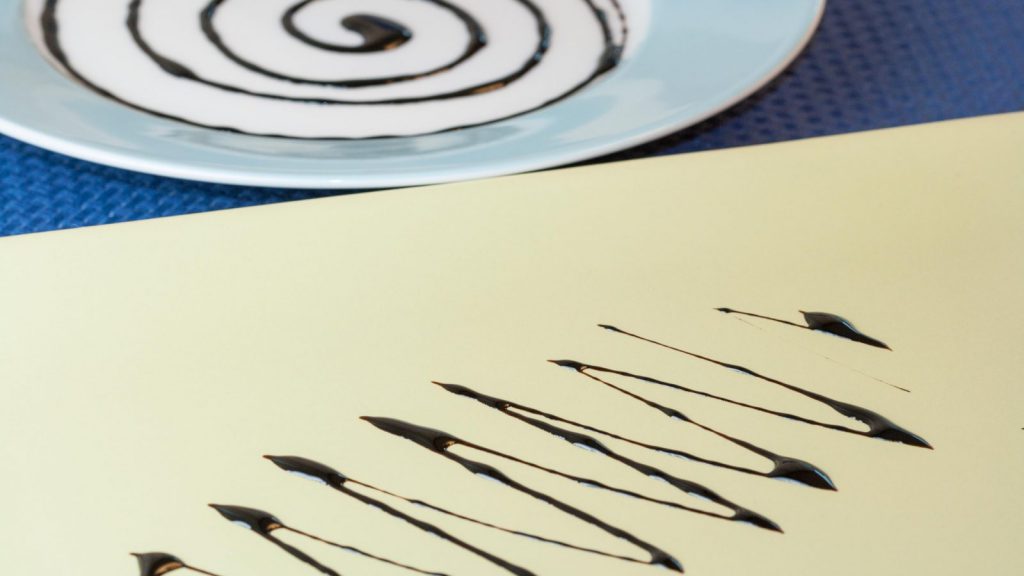Balsamic Vinegar Reduction
This easy-to-make sauce will add a fancy finishing touch to appetizers such as Salmon Tartare, Crab Cakes or Tomato Salad, among others. The vinegar is reduced to a glaze and will stay fresh in the refrigerator indefinitely.
Ingredients
- 1 cup balsamic vinegar
Instructions
Please! Do not use expensive balsamic vinegar to make the reduction; it will be a big waste of a fantastic product and money. Use an inexpensive imitation of the real balsamic vinegar of Modena.
- Pour vinegar into a small stainless steel saucepan. Bring to a boil and reduce on medium heat to ¼ cup, or until the vinegar turns to a glaze.
- Leave at room temperature for a few minutes to slightly cool before pouring in a plastic squeeze bottle. Now, keep in the refrigerator.
- Before use, set the squeeze bottle of reduced vinegar out until it reaches room temperature.
- To decorate, drizzle the balsamic vinegar reduction around the plated food or over the plate.
Video
Notes
History of balsamic vinegar:
- Balsamic vinegar can only be produced in the regions of Modena and Reggio in Italy. The first historical reference to balsamic vinegar dates back to 1046 when a bottle of balsamic vinegar was reportedly given to Emperor Enrico III of Franconia as a gift. In the Middle Ages, it was used as a disinfectant. Balsamic vinegar also had a reputation as a miracle cure, good for everything from sore throats to labor pains.
- Made from the white Trebbiano grape, balsamic vinegar gets its pungent sweetness from aging for several years in wood barrels. During the Middle Ages, this sugar-rich grape was used primarily for wine, but its high acidity made it better suited for producing vinegar. Produced in Modena, Italy, the maturation process takes place in a series of barrels made from a variety of woods and lasts from 6 to 25 years.

